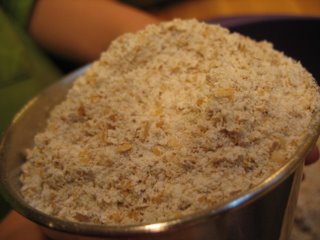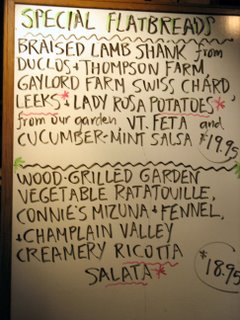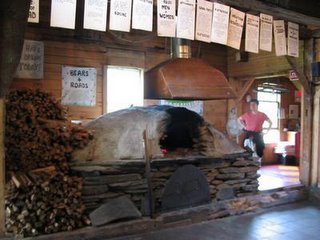
Hmmm it’s a conundrum. If I see a person in terrible pain, I experience anguish which inspires compassion. Intellectually, though, I know that this suffering occurs around me all the time. Since I know this, why shouldn’t I be constantly plagued with such anguish? Maybe I am. I kinda feel that way right now...
But here is another take. This entire discussion assumes that minimizing human suffering is the “Right Thing To Do.” Presumably we can all agree that we are all humans and that experiencing a sort of constant anguish because of an awareness of suffering in the world is itself a form of human suffering. Pretty clever, huh? Thus, perhaps the ability to insulate ourselves from this despair is something we ought to celebrate as a tool that has the happy result of minimizing net human suffering. It is hard to feel good about this line of thinking so long as you are thinking in terms of insulating yourself from feeling anguish about the pain others experience, but turn the tables for a minute. Assume that you’re the one experiencing some unjustifiable terrible pain. Most of would consider it a blessing if we could find a way to protect, say, our children from witnessing and despairing because of our own pain.
But it seems hard to celebrate this gift of denial because one tends to think that if humans do not despair at their fellow creatures' suffering they are not apt to do a damn thing about it -- heck I do despair and I barely do a damn thing about it. As mentioned above, what little compassion I can muster seems to emanate from a sense of distress generated from others' suffering. But here’s the thing: perhaps one should be able to cultivate that compassion on its own for its own sake without having it be the product of your own anguish, despair etc. Aha! (Maybe everyone else can already do this and its just me...)
I am not sure but I think all of this leads me to the simple conclusion that we would all be best off if we could cultivate the ability to not despair at others' suffering (i.e. what I was calling the ability to “deny” above) and at the same time nurture the instinct to be compassionate to our fellow creatures nevertheless. This would seem to have the positive effect of minimizing net human suffering (allowing ourselves not dissolve into puddles of despair) without stripping us of the motivation to ameliorate the suffering of our fellow creatures.
I’ve always wondered about reconciling the Buddhist notion of nonattachment with its celebration of compassion. They seem in conflict but I think the exercise above gets me a little closer to understanding. In other words, there is no value in being so attached to this world that your awareness of the world causes you distress. Indeed, shunning attachment fosters a net reduction of suffering in the world so long as – and this is the big one – so long as you nurture compassion for your fellow creatures. The compassion component is really important to balance out the nonattachment. Huh, I've never really seen it this way! I'll probably forget about it in the morning, though. Maybe I've forgotten it a bunch times... Nah...
Now I can sleep, anyway. I bet you're already there....
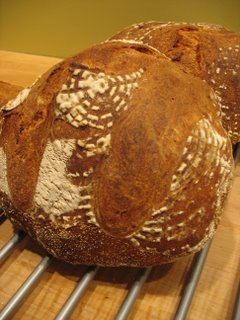
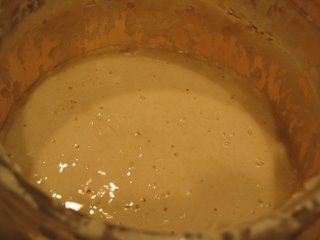 Its an interesting observation, I think, that many of the foods about which we obsess the most involve a culture or a fermentation -- think wine, spirits, cheese (and sourdough). Part of it is the complexity of the resulting taste, but part of it also, I think, is primal. There is something darkly appealing about a delicious flavor that flirts with the taste of spoilage. How else can one account for the beloved french cheeses such as morbier, which have distinct overtones of toenail clippings and dead animals.
Its an interesting observation, I think, that many of the foods about which we obsess the most involve a culture or a fermentation -- think wine, spirits, cheese (and sourdough). Part of it is the complexity of the resulting taste, but part of it also, I think, is primal. There is something darkly appealing about a delicious flavor that flirts with the taste of spoilage. How else can one account for the beloved french cheeses such as morbier, which have distinct overtones of toenail clippings and dead animals. Honestly, now, consider the pancake. Humble but proud, the pancake was born of rustic griddles and coarse-milled grains but passes effortlessly into the uptight company of creme fraiche, fancy berries and bad coffee in silver service. When I was child, my mother made fine buttery pancakes on most weekend morns. So dedicated was my family, that when we were unable to acquire even imitation maple syrup in our home of central Africa, we made do with homemade sugar syrup flavored with maple extract. The 'cakes were still good.
Honestly, now, consider the pancake. Humble but proud, the pancake was born of rustic griddles and coarse-milled grains but passes effortlessly into the uptight company of creme fraiche, fancy berries and bad coffee in silver service. When I was child, my mother made fine buttery pancakes on most weekend morns. So dedicated was my family, that when we were unable to acquire even imitation maple syrup in our home of central Africa, we made do with homemade sugar syrup flavored with maple extract. The 'cakes were still good.

